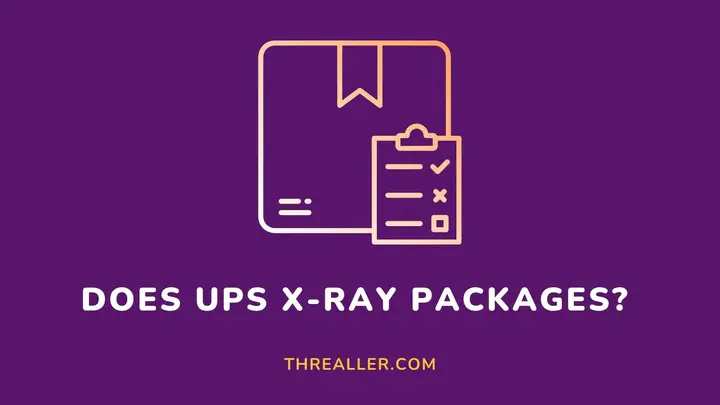One of the popular questions shoppers and retailers ask is whether UPS or other shipping companies x-ray parcels or packages before shipping. UPS x-ray packages but does it at its discretion.
X-ray scans are designed to inspect packages for threat and compliance. However, UPS mostly subjects packages crossing international borders or are being shipped via air freight to this procedure.
This guide explains why UPS x-ray packages and how the scanners work. You will also find out the different types of X-ray scanners common in shipping companies and certain precautions.
Does UPS X-Ray Packages?
Yes, UPS x-ray packages. It is a process that helps carriers scan for prohibited or hazardous content such as explosives, drugs, and toxic chemicals within a package. It also disrupts criminal activities such as drug and human trafficking.
However, not every package undergoes X-ray scans. Most packages undergo label scans to activate tracking. Aside from shipment passing through ports, these are characteristics that can make a package require an X-ray scan:
- An odd shape or weight not relating to the size of the package
- Excessive or pattern-less taping
- The presence of a postmark that does not match the return data
- Excessive or no postage
- Powdery substance leakage
- Misspellings
- Weird odor
Additionally, your package may have to undergo special metal and explosive detection examination before being allowed on airplanes.
How X-Ray Scanner Works
X-ray scanners in shipping or sorting facilities capture the image of what a package contains. The system sends an electromagnetic wave through the shipment to produce a shadow image and detect abnormalities.
This result gets displayed on a screen or monitor and is analyzed by a trained operator to determine whether it should be flagged.
Suspicious features they watch for include irregular shape or weight, especially in metallic or organic packages.
Types of X-Ray Scanners

UPS uses different types of scanners. What primarily determines the X-ray scanner for a package is its size, shape, and weight.
Here is a breakdown of the possible X-ray systems that scan UPS packages:
- Fixed X-ray system: This X-ray device is permanently fixed in a facility such as a loading dock or mail room. They are ideal for large packages such as craters and skids.
- Mobile X-ray system: From the name, you can tell that these X-ray scanners are portable. In other words, they can be moved from one airport to another and scan freight and cargo on trucks.
- Handheld X-ray system: These are portable X-ray scanners that can be held by a UPS employee or a customs officer. They are ideal for scanning small packages like parcels, mail, or luggage.
Effects of X-Ray Scanning on Packages
While X-ray scanners are designed to keep everyone involved in a shipping process safe, they can have potential package side effects. This is because electromagnetic waves generally do not combine well with electronic devices.
It can damage devices such as cameras, laptops, and phones. To avoid this, all UPS scanners undergo appropriate calibration that only allows little exposure.
UPS advises customers to package their items appropriately, especially electronic devices. This mitigates the risk of potential damage due to X-ray scans.
FAQs
What makes a package look suspicious?
Signs to watch out for include excess postage, irregular taping, powdery leakages, and an odd smell.
Does USPS scan packages?
USPS scans packages via label and x-ray devices too. The former registers the package into its system and activates online tracking, while the latter detects danger.
Does UPS lose a lot of packages?
UPS rarely loses packages. When such happens, there are steps you can take to resolve it.
Conclusion
UPS x-ray packages to ensure that all shipments leaving a sort facility or airport comply with safety laws and regulations. They also reserve the right to open and inspect any suspicious package.
While this process has greatly reduced the shipping of prohibited packages and criminal activities, electromagnetic wave exposure can potentially damage packages (especially electronics).
However, this rarely occurs with UPS shipments because their X-ray scanners are calibrated to emit the lowest level of electromagnetic wave. Hence, you should be good to go once you abide by UPS packaging requirements.
I hope you found this guide helpful. If you did, you might also be interested in knowing the meaning of a UPS Origin Scan.
Thanks for reading.
